|
If you're prepared to forego some sleep, May can be a good time to view the Milky Way from the UK.
The 40-minute timelapse shows the galactic centre, in the constellation Sagittarius, rising to the South. It's the brightest region of the Milky Way due to the concentration of stars. The glow on the left is from the city of Plymouth 15 miles away.
The panoramic image was stitched together from about a dozen overlapping frames, from North on the left to South on the right. The centre of our galaxy is to the right while to the left we're looking towards its outer regions.
The naked eye view is both more and less impressive than the panorama. The image shows more detail and colour but can't convey the immense scale of our galaxy reaching across the sky. Observation and astrophotography complement each other.
The Milky Way is a spiral galaxy, a disc-like structure with a central bulge of stars. Our solar system resides in the Orion-Cygnus arm.
Notice how the constellations match up with those visible in the panorama. From our vantage point we have a limited view of the Milky Way as its dust lanes block our view, thanks to instruments like the Hubble space telescope we have a better idea of the shape of many distant galaxies than our own. The image above is an artist's representation but it's based on real data. The major features have been mapped out from radio signals and infra-red light, which can travel through the dust.
The dust lanes can be seen in the panorama, the most prominent one the Great Rift which runs from Cygnus to Sagittarius. Visually, it splits the Milky Way in two. There are just as many stars in this region but they are hidden from view.
We can view different sectors of the galaxy over the course of the year as the Earth orbits the Sun. From the UK the southern constellations between Norma and Puppis never rise above the horizon but the others - Canis Major to Scorpius - can be seen. The galactic centre is best seen in May, August and September (in June and July the nights are short and the sky never gets fully dark as the upper layers of the atmosphere are it up by the Sun). Canis Major, Monoceros and Orion are best viewed in the Winter.
0 Comments
Video Credit: Sam Morell of XRT-C On 7th July, it was officially announced that Bodmin Moor and the peripheral areas had been designated as an International Dark Skies Landscape. This was the culmination of three years’ arduous work collecting vast amounts of data which led to a comprehensive application, jointly submitted by Cornwall Council and Caradon Observatory to the International Dark Skies Association, in Tucson. Significantly, this was the first time that an Area of Outstanding National Beauty (AONB) had been successful.
... Full astronomical darkness is now returning to the southern UK. Here's a chart from FLO's Clear Outside showing annual darkness for Bodmin Moor. In the blue portion of the chart, centered around Midsummer, the sky never becomes fully dark. At that time of year the Sun never drops very far below the horizon, so the upper layers of the atmosphere are still lit up in an extended twilight. This isn't easily noticeable from brightly-lit towns and cities but is quite obvious from a dark, rural location. Astronomical images taken outside of astro-dark have a blue tint and are washed out to some degree by the reflected sunlight. The 15 second exposure above was taken on the 18th June in SE Herts, at about 11:30 PM. The yellow colour at the bottom right is caused by light pollution, probably from the town of Bishop Stortford.
Here's a set of images comparing light pollution between Crowdy Reservoir on Bodmin Moor, Cornwall, and south-east Hertfordshire, about a mile north-east of the town of Ware.
|
Archives
May 2020
Categories
All
|
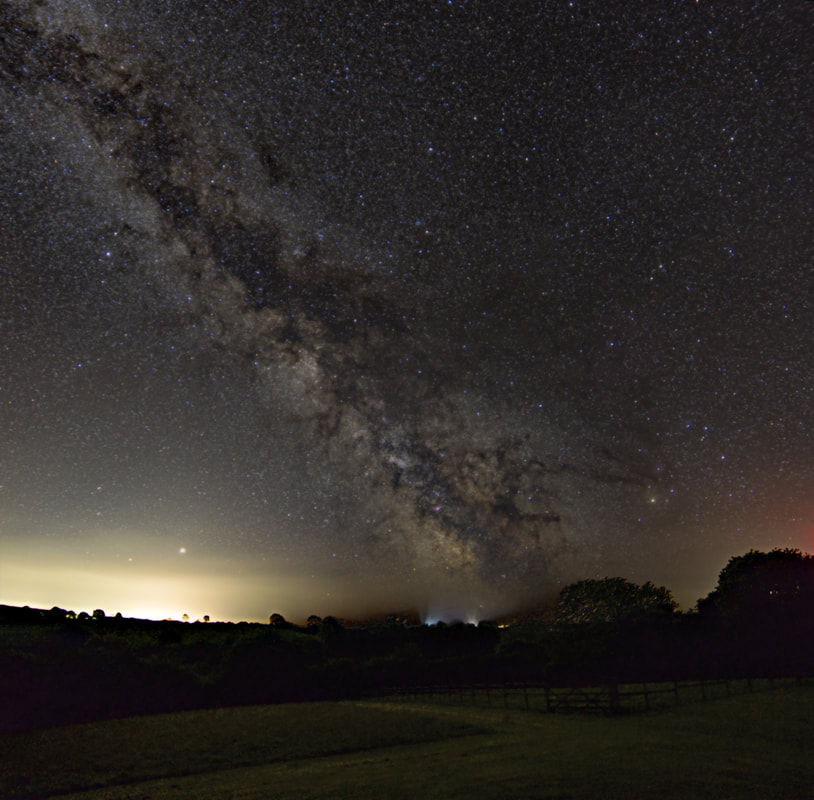
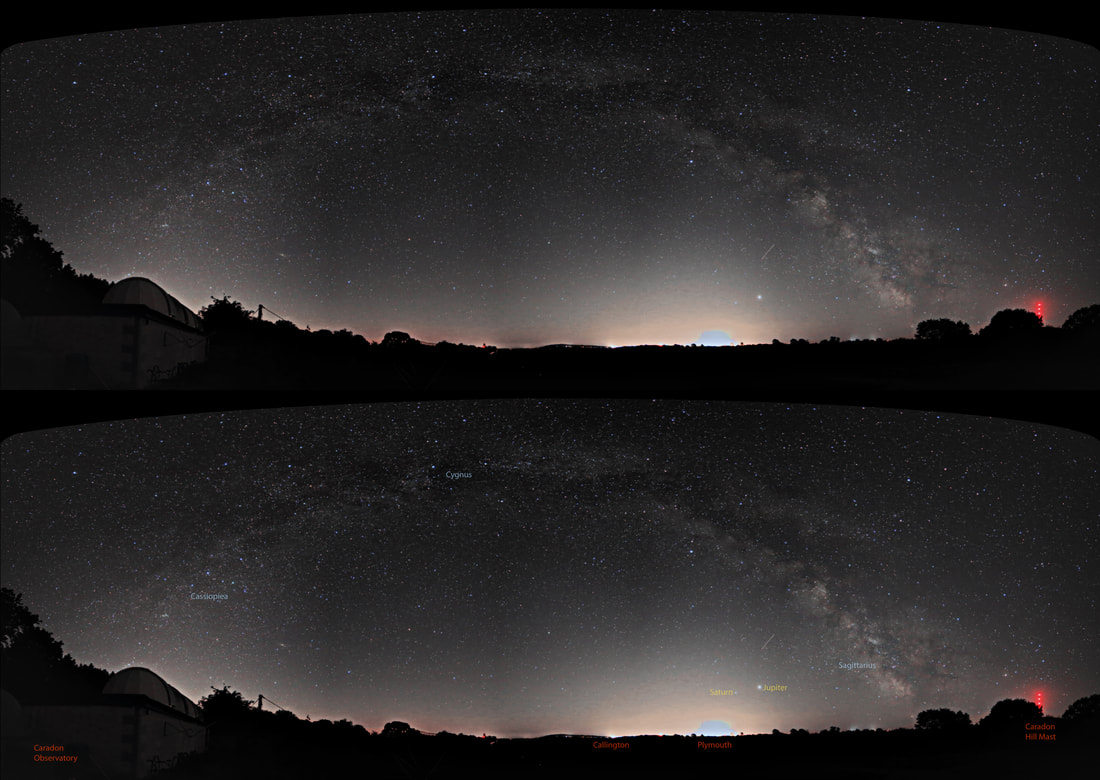

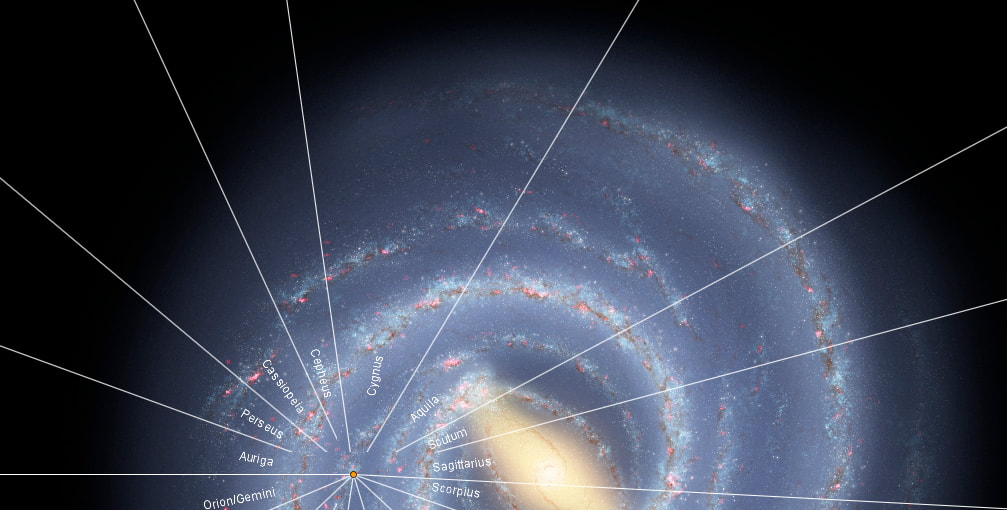
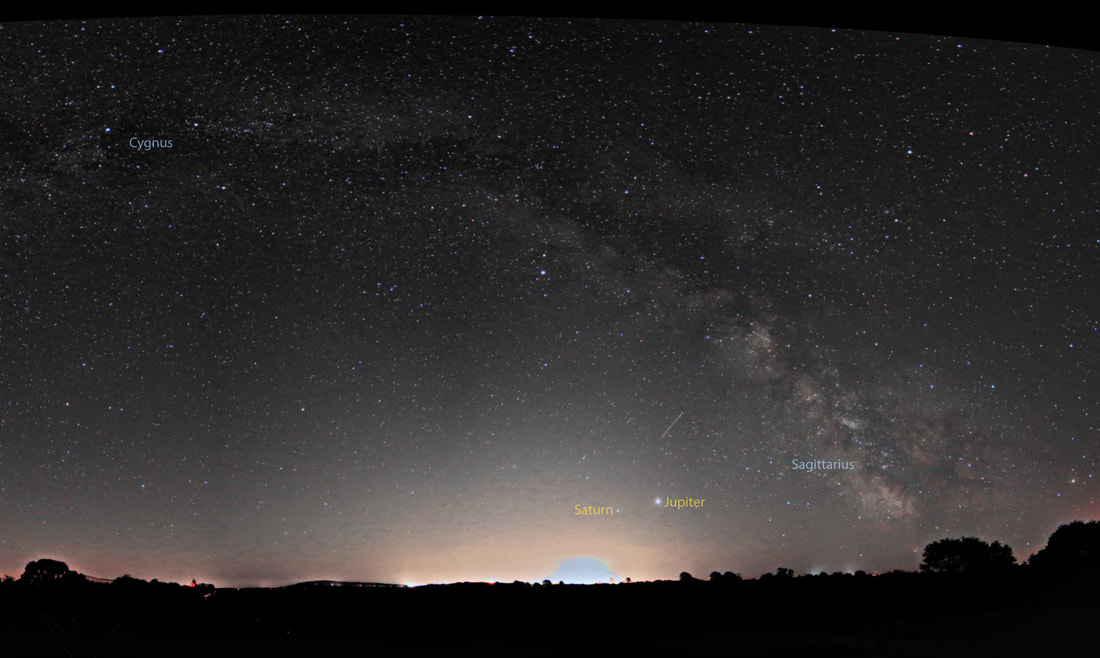

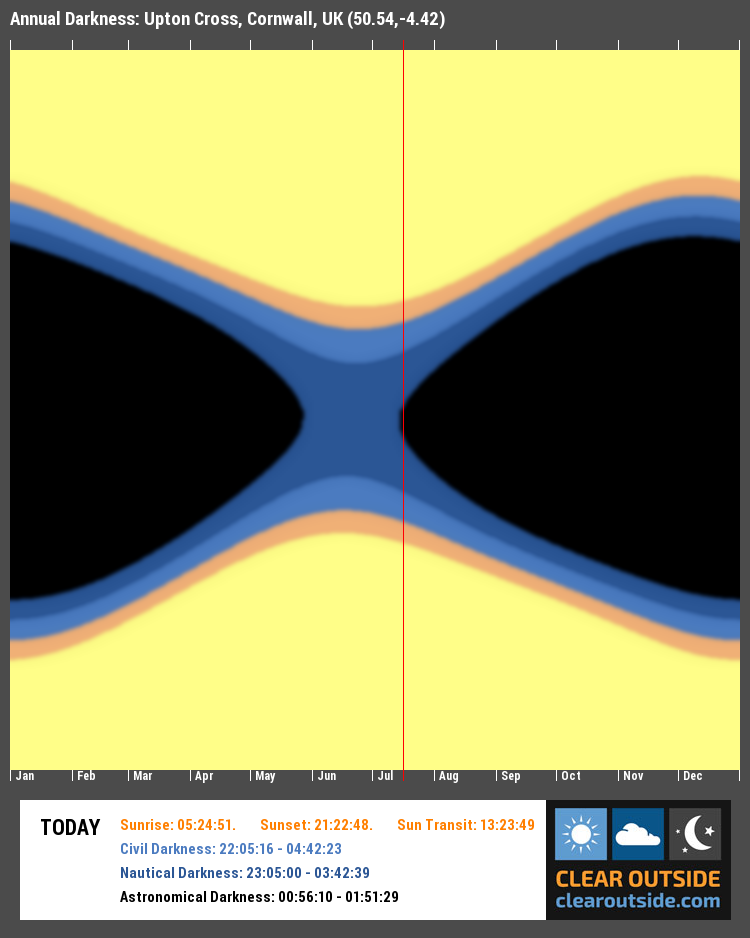
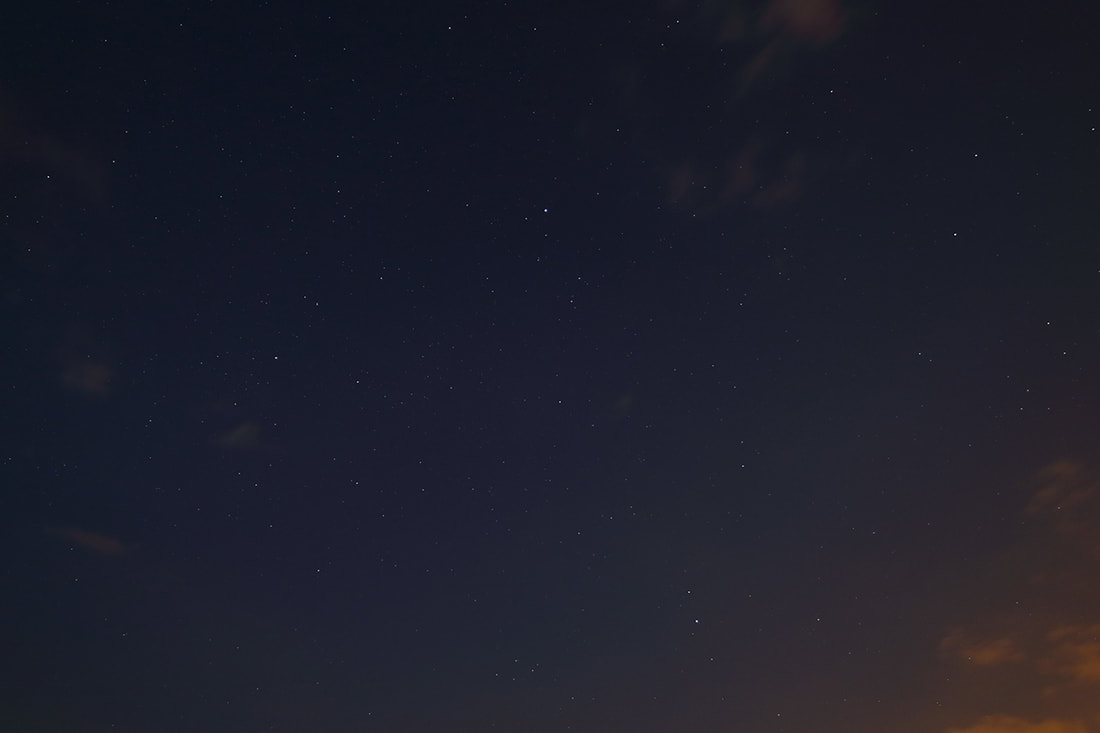
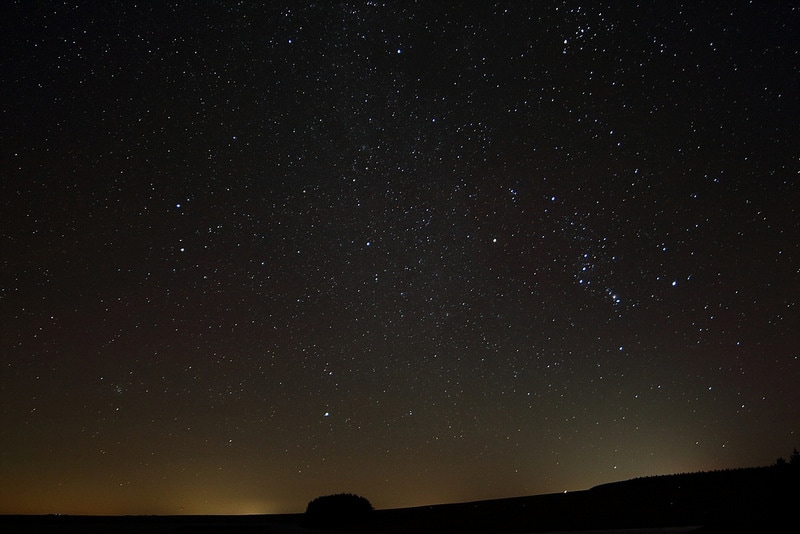
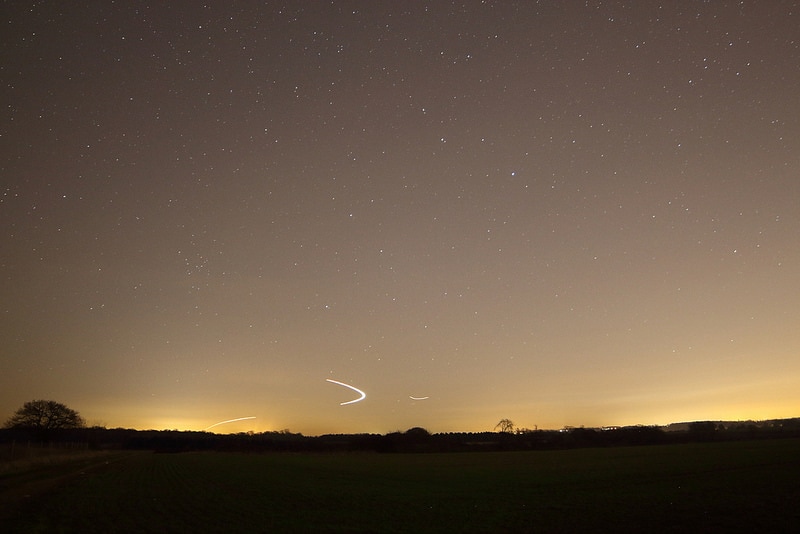
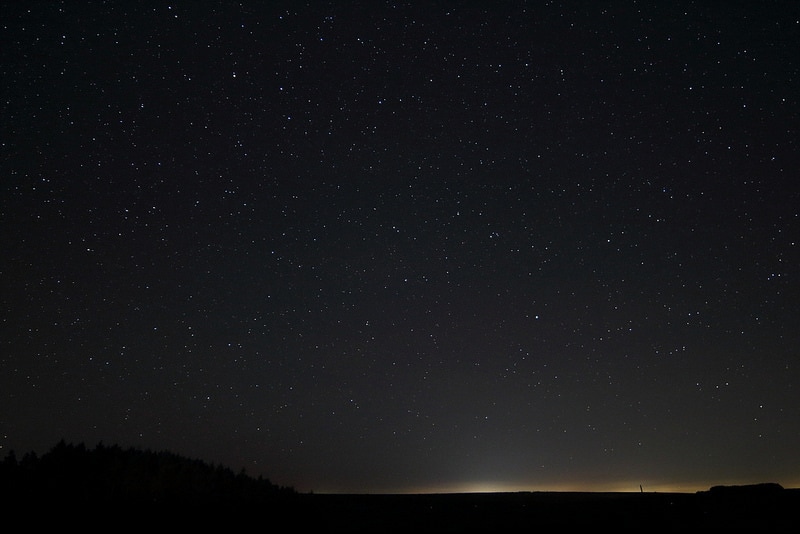
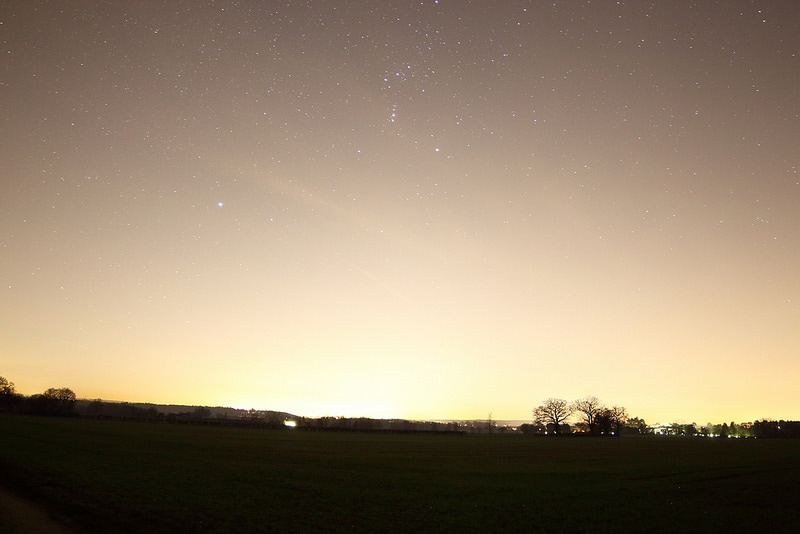
 RSS Feed
RSS Feed